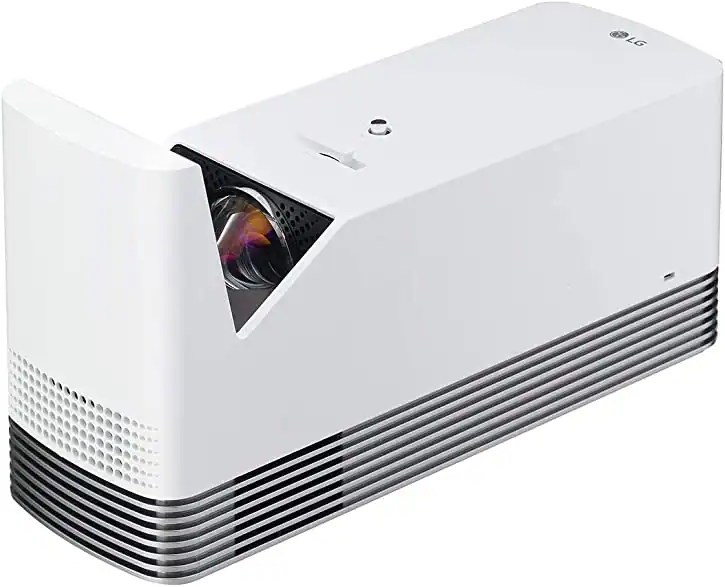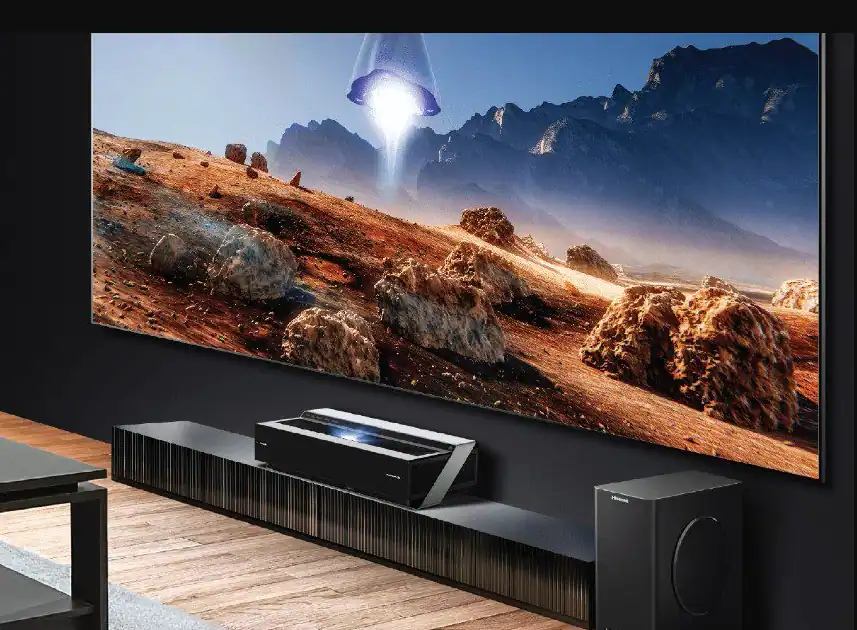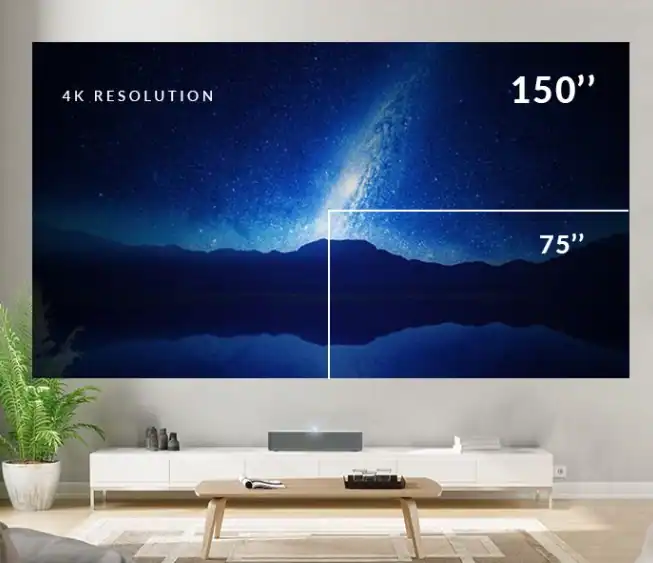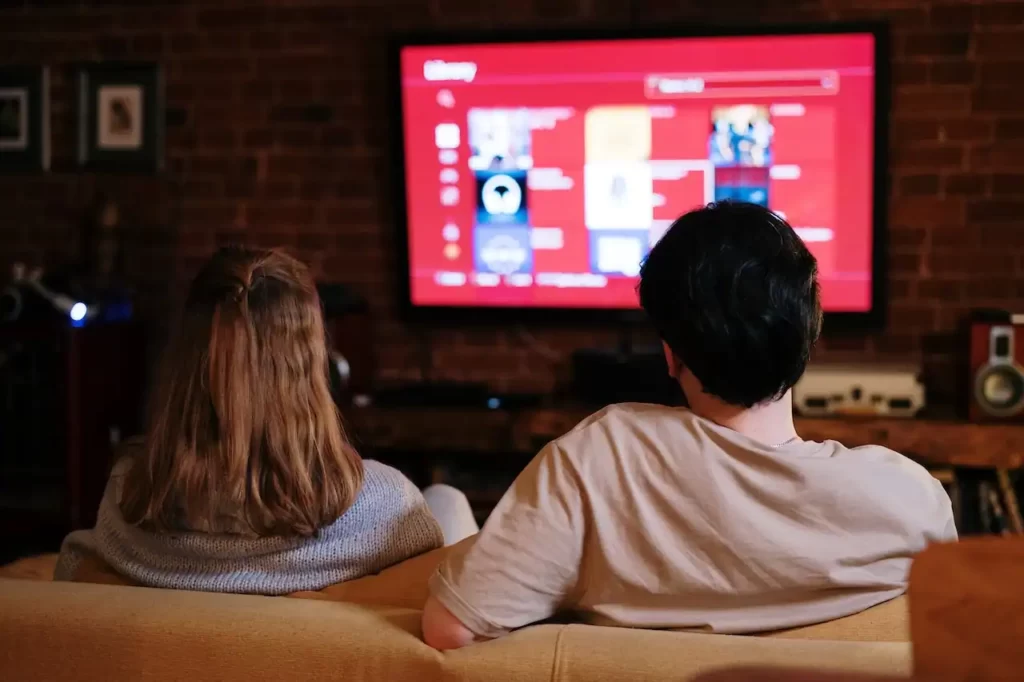In today’s digital age, projectors have become an essential tool for various purposes, be it in classrooms, boardrooms, or home theaters.
While traditional projectors require a significant distance between the device and the screen, short-throw projectors have gained popularity for delivering large, high-quality images even in tight spaces.
Short-throw projectors have revolutionized the way we experience multimedia content in various settings. But are short throw projectors good really?
Before investing in a short throw projector, it’s essential to understand its benefits, limitations, and whether they are truly good for your specific needs.
In this comprehensive article, we will delve into the world of short throw projectors, exploring their advantages, and real-life examples of short throw projectors to help you make an informed decision.
What are Short Throw Projectors?
Short throw projectors are a type of projection device designed to produce large images from a short distance.
Unlike traditional projectors that need a considerable throw distance, short throw projectors can be placed just a few feet away from the screen or wall.
This makes them ideal for small rooms or spaces where it’s impractical to have a long projection distance.

Understanding Short Throw Projectors
Short throw projectors utilize advanced lens technology and optics to minimize the projection distance while maintaining image clarity and brightness.
Unlike traditional long throw projectors that require a considerable distance between the projector and the screen, short throw projectors are perfect for smaller spaces, such as classrooms, boardrooms, and home theaters.
Another extended version of short-throw projector is an ultra short-throw projector. Yes, UST projectors are designed to sit very close to the projection surface, often just inches away, yet they produce large images.
This is achieved through advanced lens technology and mirror systems that direct the light precisely.
Comparison with traditional projectors

Traditional projectors need to be placed several feet away from the screen, which can be cumbersome in small spaces. UST projectors, on the other hand, eliminate this need, making them ideal for compact environments.
Popular Short Throw Projector Models:
Are Short Throw Projectors Good: Advantages
Short throw projectors have become a game-changer in the world of multimedia, offering a host of benefits that elevate the viewing experience to new heights.
These innovative devices have gained significant traction due to their ability to project large images from a close distance, making them ideal for various settings.
So, in this section, we will explore the compelling advantages of short-throw projectors, highlighting how they enhance space utilization, minimize distractions, and provide a comfortable viewing environment.
Space-saving
One of the primary advantages of short throw projectors is their ability to operate in tight spaces. By projecting from a short distance, they eliminate the need for extensive room setup and allow for flexible placement options.
This makes them an ideal choice for smaller rooms or environments where space is limited.
Flexibility
Short throw projectors offer more flexibility in terms of placement options. They can be mounted on the ceiling, placed on a table, or even used with portable screens, providing versatility in various environments.

Interactive capabilities
Many short throw projectors come with interactive features such as touch sensitivity or gesture control, making them suitable for interactive presentations or collaborative learning environments.
Reduced shadows and glare
With a short throw projector, the presenter or audience members are less likely to cast shadows on the projected image. This is particularly useful in educational settings, where teachers or presenters can move freely without obstructing the content.
Eye comfort
Short throw projectors are known for reducing eye strain, as the projected light is directed away from the audience’s eyes. This helps create a more comfortable viewing experience, especially during extended periods of use.
Recommended:
- Short Throw vs Long Throw Projector
- Learn All About Projector Specs
- How Do 3D Projectors Work?
- Best Projector For Bright Rooms
- Best Projector For Projection Mapping
Short Throw Projectors: Real-life Examples
Let’s explore a few real-life examples where short throw projectors have proven to be beneficial:
Interactive Classrooms
Short throw projectors have revolutionized traditional classrooms, making education more interactive, engaging, and immersive. In interactive classrooms, short throw projectors are often paired with interactive whiteboards or touchscreens.
This combination enables teachers to project educational content directly onto the whiteboard or screen, transforming it into an interactive surface.
Students can then actively participate, solve problems, and collaborate directly on the projected content using touch or stylus input.
This hands-on approach enhances student engagement, encourages participation, and facilitates a deeper understanding of the material being taught.
Cinematic Experiences at Home
Short throw projectors have brought the magic of the big screen into the comfort of our homes. With their ability to project large images from close distances, they have become a popular choice for home theaters.
Homeowners can create a dedicated theater room or transform their living spaces into a cinematic haven.

By pairing a short throw projector with a quality projection screen or even a blank wall, users can enjoy an immersive theater-like experience.
Whether it’s watching movies, streaming TV shows, or gaming, short throw projectors provide sharp, vibrant visuals that rival the quality of traditional TVs, but on a much grander scale.
Engaging Meetings and Conferences
Short throw projectors have revolutionized business presentations, offering a more engaging and impactful way to deliver information. In boardrooms, meeting spaces, and conference halls, short throw projectors provide high-quality visuals, even in limited spaces.
Presenters can display presentations, charts, and data with exceptional clarity and detail, ensuring that their message is effectively communicated to the audience.
The large projected images captivate attention, promote discussion, and facilitate collaboration among team members.
The ability to project from a short distance also eliminates the risk of presenters casting shadows on the screen, ensuring an uninterrupted viewing experience for all attendees.
Digital Signage and Retail
Short throw projectors have found applications in the realm of digital signage and retail environments. Retailers can leverage the power of short throw projectors to create eye-catching and dynamic displays.
By projecting promotional videos, product information, or interactive content onto walls, floors, or mannequins, they can attract customers’ attention and enhance the overall shopping experience.
Short throw projectors offer flexibility in placement and allow retailers to transform any surface into an engaging canvas, delivering visually appealing content that leaves a lasting impression on potential customers.
Versatility and Impact
Thus as you can see from what we’ve discussed above, real-life examples demonstrate the versatility and impact of short-throw projectors across various domains.
Whether in educational institutions, home theaters, business presentations, or retail environments, short-throw projectors provide immersive visual experiences that captivate and engage audiences.
Short-throw projectors continue to push the boundaries of visual innovation, opening up new possibilities for immersive multimedia engagement in our everyday lives.
Limitations of Short Throw Projectors
- Limited throw distance: While short throw projectors excel in tight spaces, their projection range is limited compared to traditional projectors. They might not be suitable for large venues or situations where a long throw distance is required.
- Image quality and brightness: Some short throw projectors may sacrifice image quality or brightness to achieve their short throw capability. It’s important to choose a model that offers a good balance between throw distance and image performance.
- Price: Short throw projectors generally come at a higher price point compared to their traditional counterparts. The advanced technology and compact design contribute to the increased cost.
Short Throw Projectors: 6 Key Points to Consider
Investing in a short-throw projector requires careful consideration to ensure you select the right device that meets your specific needs and provides an optimal viewing experience.

With a range of options available in the market, it’s essential to evaluate various factors before making a purchase decision.
In this section, we will outline the key factors to consider when buying short throw projectors, helping you make an informed choice and enhance your multimedia setup.
#1. Projection Distance and Image Size
One of the primary considerations when buying a short throw projector is the desired projection distance and image size. Measure the available space in your intended location and determine the optimal screen size for your viewing preferences.
Short throw projectors come with different throw ratios, which determine the projection distance required to achieve a specific image size.
Understanding your space constraints and desired image size will guide you in selecting a projector with the appropriate throw ratio, ensuring a satisfying and immersive viewing experience.
#2. Brightness and Image Quality
Brightness plays a crucial role in the performance of a short throw projector, particularly in well-lit environments.
The brightness of a projector is measured in lumens. Consider the lighting conditions in your viewing area and choose a projector with adequate brightness to ensure clear and vibrant visuals.

Additionally, pay attention to the native resolution of the projector. Higher native resolutions deliver sharper and more detailed images.
Assess your usage scenarios, such as presentations, movies, or gaming, and select a projector with a suitable brightness level and native resolution that aligns with your requirements.
#3. Connectivity Options
Evaluate the connectivity options available on the short throw projector. Ensure compatibility with your devices and connectivity preferences.
Common connectivity options include HDMI, DVI, VGA, USB, and wireless connections. HDMI is widely used for high-definition content, while USB ports provide convenient connectivity for external devices.

Wireless connectivity allows for seamless screen mirroring and content sharing from compatible devices. Consider your specific connectivity needs and choose a projector that offers the necessary connection options to connect your devices and accessories effortlessly.
Related: Projector Ports: What Are The Ports Available In A Projector?
#4. Keystone Correction & Lens Shift
Keystone correction allows for image adjustment to correct distortions caused by the projector’s angle or placement. This feature ensures a properly proportioned and rectangular image, even if the projector is not perfectly aligned with the screen.
Lens shift enables horizontal or vertical adjustments of the projected image without physically moving the projector. This feature enhances flexibility in projector placement and helps achieve a precisely aligned image on the screen.
#5. Built-in Speakers
Short-throw projectors may come with additional Built-in Speakers to enhance user convenience. Consider whether the projector includes built-in speakers.
While external audio systems often provide superior sound quality, built-in speakers can be convenient for smaller setups or on-the-go usage.
#6. Budget and Cost Considerations
Set a realistic budget for your short-throw projector purchase. Consider the features and specifications that are essential to your needs and prioritize them accordingly. It’s important to stay within your budget but it’s also crucial to balance it with the desired quality and functionality.
Research and compare prices, read reviews, and assess the value offered by different models to make an informed decision that aligns with your budget constraints.
Short Throw Projectors: FAQs

Are short throw projectors better than normal?
Short throw projectors offer several advantages over normal projectors. They are specifically designed to project large images from a close distance, making them ideal for small spaces.
Short throw projectors minimize distractions caused by shadows and obstructions, ensuring an uninterrupted viewing experience. They also prioritize viewer comfort by reducing eye strain.
Additionally, short throw projectors are commonly used in interactive classrooms and provide a cinematic experience in home theaters. While both types have their merits, short throw projectors excel in specific scenarios where space, engagement, and immersive visuals are key considerations.
What is the downside of short throw projector?
While short throw projectors offer numerous benefits, there are a few potential downsides to consider. One limitation is that short throw projectors typically have a higher price point compared to regular projectors.
Additionally, their projection distance may be limited, making them less suitable for large rooms or outdoor setups. Some short throw projectors may also have limited zoom capabilities, which can impact the flexibility of adjusting image size.
And, the placement of a short throw projector requires careful consideration to ensure proper alignment and avoid distortion.
What is the life span of a short throw projector?
The lifespan of a short throw projector can vary depending on various factors, including the quality of the projector, usage patterns, maintenance, and environmental conditions. On average, short throw projectors can last between 2,000 and 10,000 hours of lamp life.
However, advancements in projector technology, such as the use of LED or laser light sources, have increased the lifespan significantly, with some models boasting up to 20,000 or more hours of lamp life.
How big of an image can you put on a short throw projector?
The size of the image that can be projected by a short throw projector depends on factors such as the projector’s throw ratio and the distance between the projector and the projection surface. Short throw projectors are designed to project large images from a close distance.
With the appropriate projector and screen combination, it is possible to achieve image sizes ranging from 60 inches to over 120 inches diagonally. However, it’s important to consult the specifications provided by the manufacturer to determine the specific projection size capabilities of a particular short throw projector model.
What additional features should I consider when choosing a short throw projector?
When selecting a short throw projector, consider additional features such as keystone correction, lens shift, and built-in speakers. Keystone correction helps adjust image distortions caused by the projector’s angle or placement.
Lens shift allows for horizontal or vertical adjustments of the projected image without physically moving the projector.
Built-in speakers can provide convenience for smaller setups or on-the-go usage, although external audio systems may offer superior sound quality.
How much should I budget for a short throw projector?
The cost of short throw projectors can vary depending on the brand, features, and specifications. It’s essential to set a realistic budget and balance it with the desired quality and functionality.
Research different models, compare prices, and read reviews to determine the best value for your budget. Consider your specific needs and prioritize features accordingly.
Wrapping It Up
Short-throw projectors offer a range of benefits, making them an excellent choice for various applications. Their space-saving capabilities reduced shadows and glare, and eye comfort makes them highly desirable for educational institutions, home theaters, and business presentations.
By understanding your specific needs and considering factors that we’ve already discussed like projection distance, image size, brightness, and more, you can make an informed decision when selecting a short-throw projector.
Thus, you can elevate your multimedia setup and enjoy the benefits of a high-quality short-throw projector that meets your specific needs.
Moreover, embrace the possibilities that short-throw projectors offer and enhance your multimedia experiences with larger-than-life visuals in even the most compact spaces. Thank You For Reading!
As an experienced Software Engineer in a Projection-Based Technology Company, I love sharing my Knowledge to utilize and help others to learn more about Projectors. Thus one can get the right Projector for their needs.



